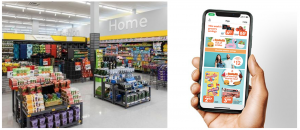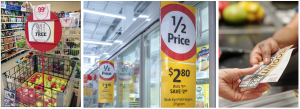With recent rising prices, more shoppers are visiting discount retailers than ever before. A 2023 Payments survey revealed that 44% of shoppers considered themselves “deal chasers” and were willing to go wherever they will get the best price.
There has always been a segment of customers that avidly pursue bargains – and now this group is growing. And while e-commerce has a bigger share of shopping today, the true discount shopper knows that the best bargain hunting happens on the store floor. Discount retailers should consider how to make their shopping experience fun, satisfying and worth the effort. It could help bring them happily-ever-after customer loyalty.

Here are 6 things to know to create a great discount retail experience:
1. Bargain hunting is a quest
Many shoppers choose discount not just because of their budget, but because they love the thrill of the hunt. To them, stretching their dollars and finding the lowest weekly price on an item is a point of pride. They hunt every week at many stores, travelling distances and sharing savings opportunities with their friends. Weekly promotions need to reward this diligence: the front-page flyer deals should be consistently competitive, battling competitors to offer the lowest prices of the week.

2. Look the part
Discount shoppers understand that low prices are possible because these stores have fewer labour costs, so they expect the store to ‘look the part’. Rather than immaculately stacked shelves, a great discount store environment has walls of savings, large scale merchandising and multiple skid displays. Wide aisles allow pallet drops, products in dump bins and for customers to help themselves to items out of cut cases rather than from tidy shelves. These “shop-scapes” create price drama but don’t require a lot of restocking labour. But neat and clean should still be top operational priorities: some discount retail environments reveal too much evidence of the cuts in labour and stores are dirty, cluttered and disorganized. A sub-par store presentation suggests a lack of respect for customers.

3. Stage the signs
The discount shopper sees price first, and product second. A discount environment should have prices that are easy to see against a backdrop of displays and a bright, simple colour palette. Price signs, even visible at distances of 40 or 50 feet away, create a bargain haven. And price can also be made simple by rounding up and stacking like-priced items together on end caps with single price (e.g. $3) billboards. Prices on bins can be made more visible down wide aisles by using signage tools that offer the ability to stagger height. When a product has a terrific price, display with pride. Make it visible as soon as the customer turns the corner.

4. Save me money. Now.
For the real discount shopper, instant gratification matters. This customer will always seek lower prices rather than loyalty rewards: it’s always about how best to “show me the money”. The rewards program fan enjoys collecting rewards and likes custom offers based on their shopping preferences. In contrast, the discount shopper simply wants to win most shops every week in a game that’s fair and open to all.

5. Deals take many forms
In pursuit of a great price discount, the discount shopper is willing to consider any offer. If there are great in-store specials open to the first people in line, new store openings or new product launches can attract line-ups. Some weekend specials have limited quantities, and if there is a reasonable chance of competing for them (quantities last longer than 30 minutes) the discount shopper likes the challenge. Bundle offers are effective where the savings are significant and easily calculated such as a BOGO offer (Buy One, Get One free) or ‘buy two get one free’. For other bundle offers, the requirement of buying a higher price point (more volume) needs to offer a total savings of at least 20 percent.

6. There is honour in price matching
Price matching doesn’t always get the attention – and respect – it deserves. So often the customer has to find and bring the proof of a lower price in another store in order to have it matched at store level in a discount retailer. This might mean a longer wait, and a longer line with annoyed customers behind a price matcher. Discount retailers should think about the price matching strategy as a core tenet of their brand. Price matching delivers a strong price image and should not be a hassle at store level. Is there communication to facilitate the transaction when a price is challenged? Have staff been appropriately trained? Price matchers should be welcomed – they are some of a retailer’s best customers.

Do you need more drama in your discount offer? Talk to the retail experts at the Fish Agency.
Contact us today.
bryan@therealfish.agency